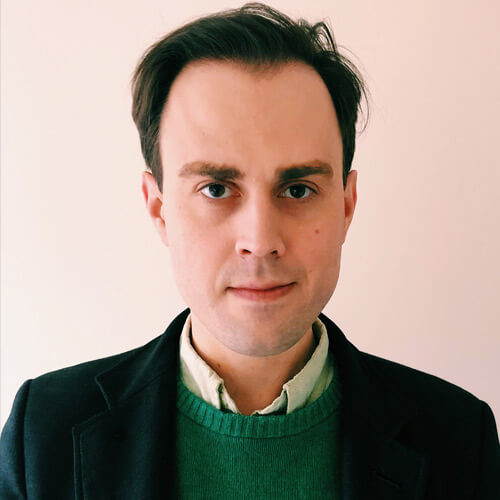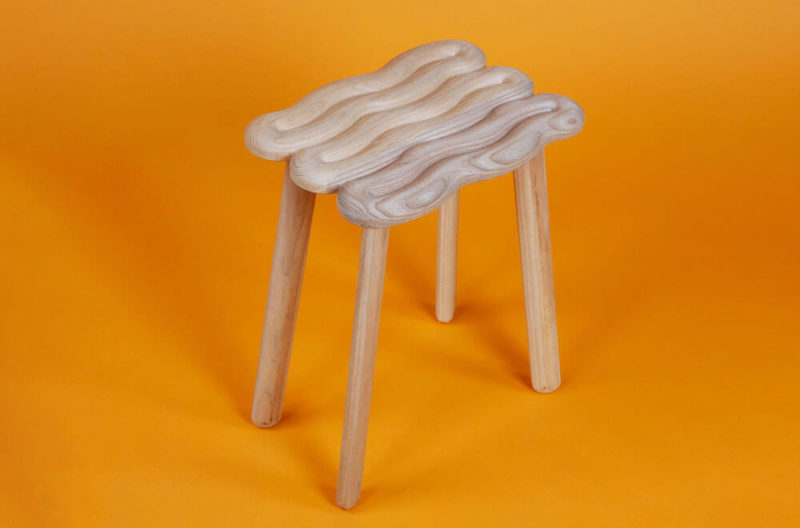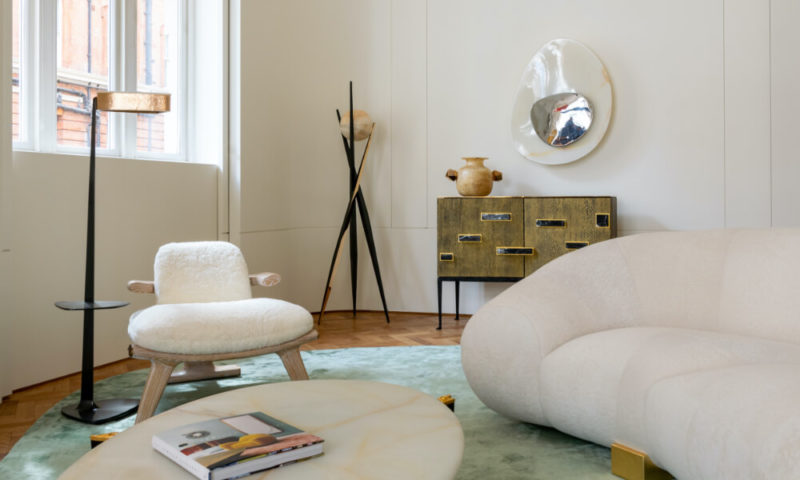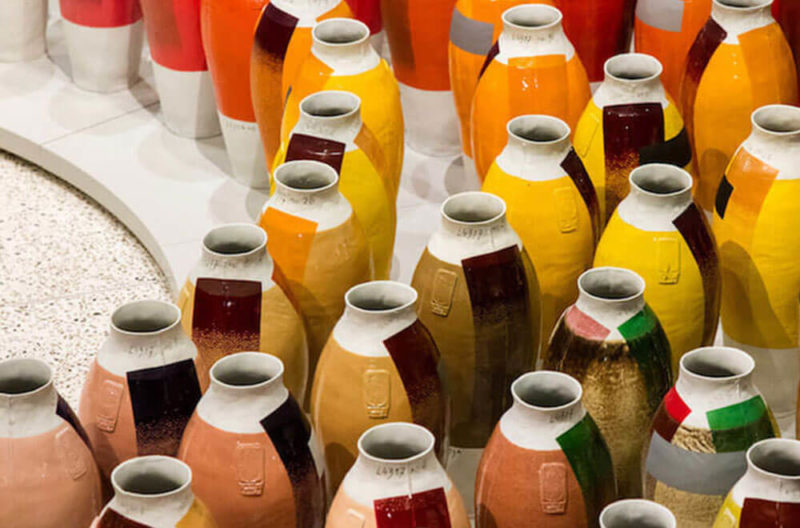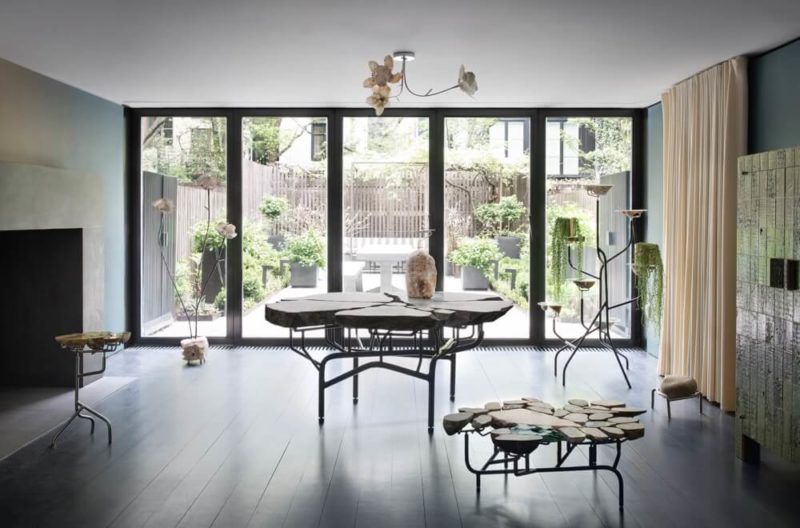Just in from Floris Wubben
Robust ceramic furnishings by the Dutch designer take pride of place at New York’s Casa Perfect.
Casa Perfect, New York
February 2021
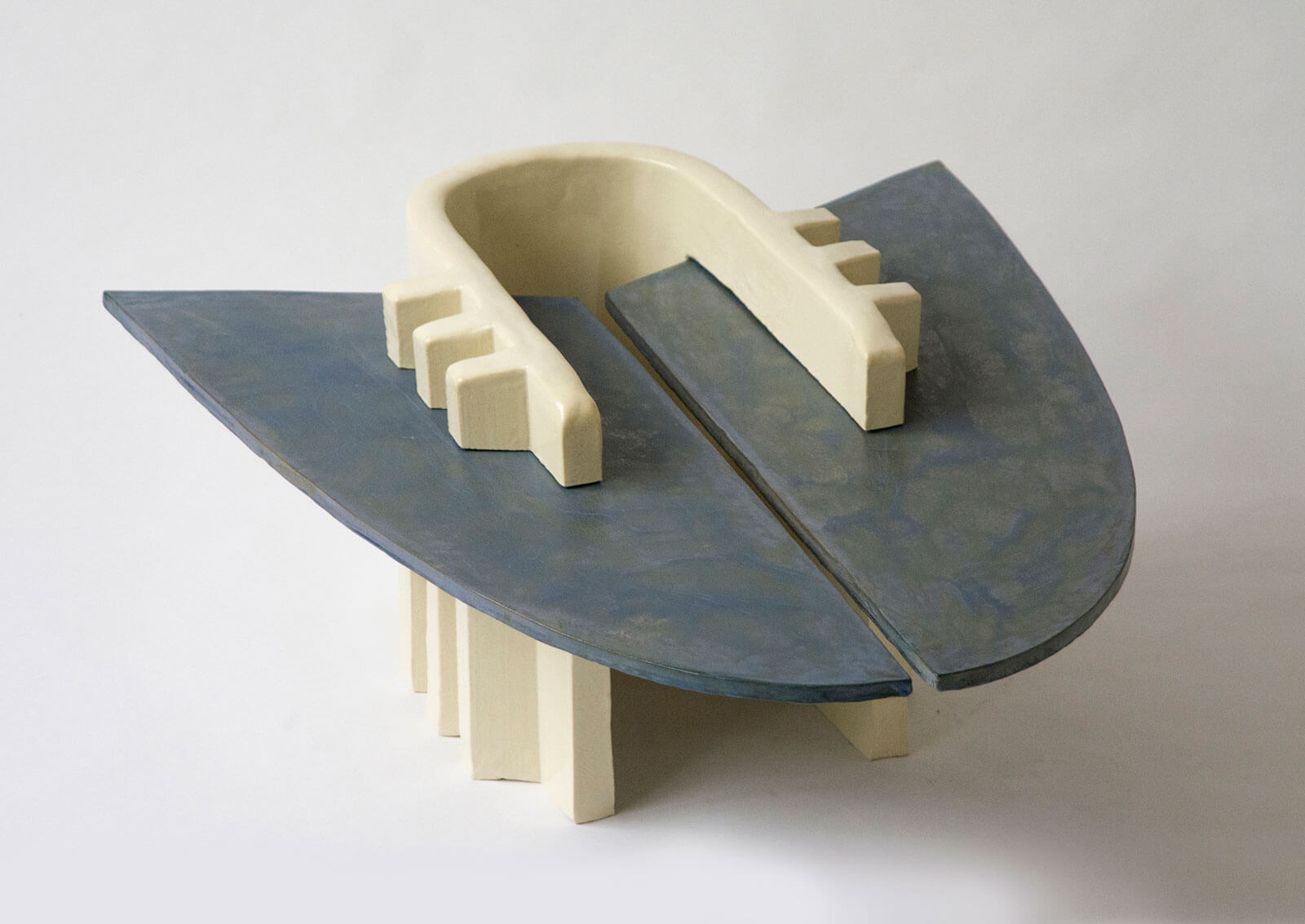
Floris Wubben, ‘Arrow Coffee Table’, 2020
COURTESY: The Future Perfect
MOST PEOPLE THINK of clay as a delicate material used to form ornate vases and fragile figurines. For Dutch designer, Floris Wubben, however, this natural substance has far more potential. With an insatiable appetite for experimentation and pushing the limits of what the material can do, the Amsterdam-based talent has spent the past decade proving this point. His prolific body of work ranges from small textured vessels to monumental dining tables.
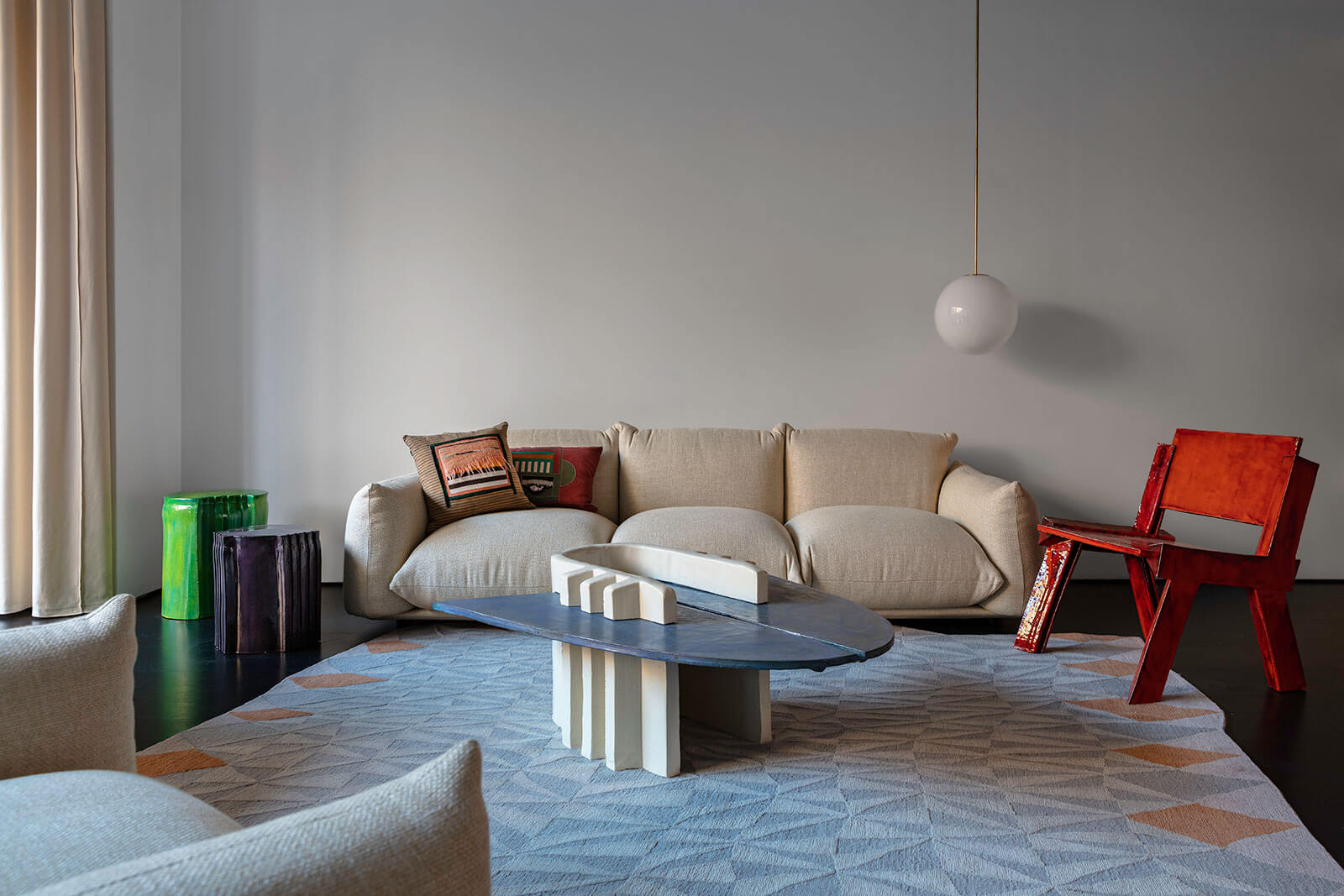
Installation view
COURTESY: The Future Perfect / PHOTOGRAPH: Ori Harpaz
The designer’s fascination with clay comes from memories of playing with Play-Doh as a child and especially his rediscovery of the toy extruder that was often sold with this multi-coloured polymer. “With that idea in mind, I began creating small machines and tried out different profiles to create different textures,” Wubben recalls, “I eventually moved on to working with epoxy clay but realised that natural clay would be more desirable and relatable. People associate it with vessels and like to feel its weight. Epoxy is too light, and so it doesn’t match their expectations. Clay is ancient. Everyone has experienced it in some form or other.”

Floris Wubben, ‘Sprocket’ vase, 2020
COURTESY: The Future Perfect
By engineering and continuously re-engineering a series of bespoke analogue machines over the past 12 years, Wubben has adopted and adapted processes like pressing and extrusion, normally found in heavy industry. As these apparatuses have become more sophisticated, so have the objects they produce. The designer is able to work on a bigger scale and with more formal complexity but ensures that these increasingly refined designs still reflect a handmade quality.
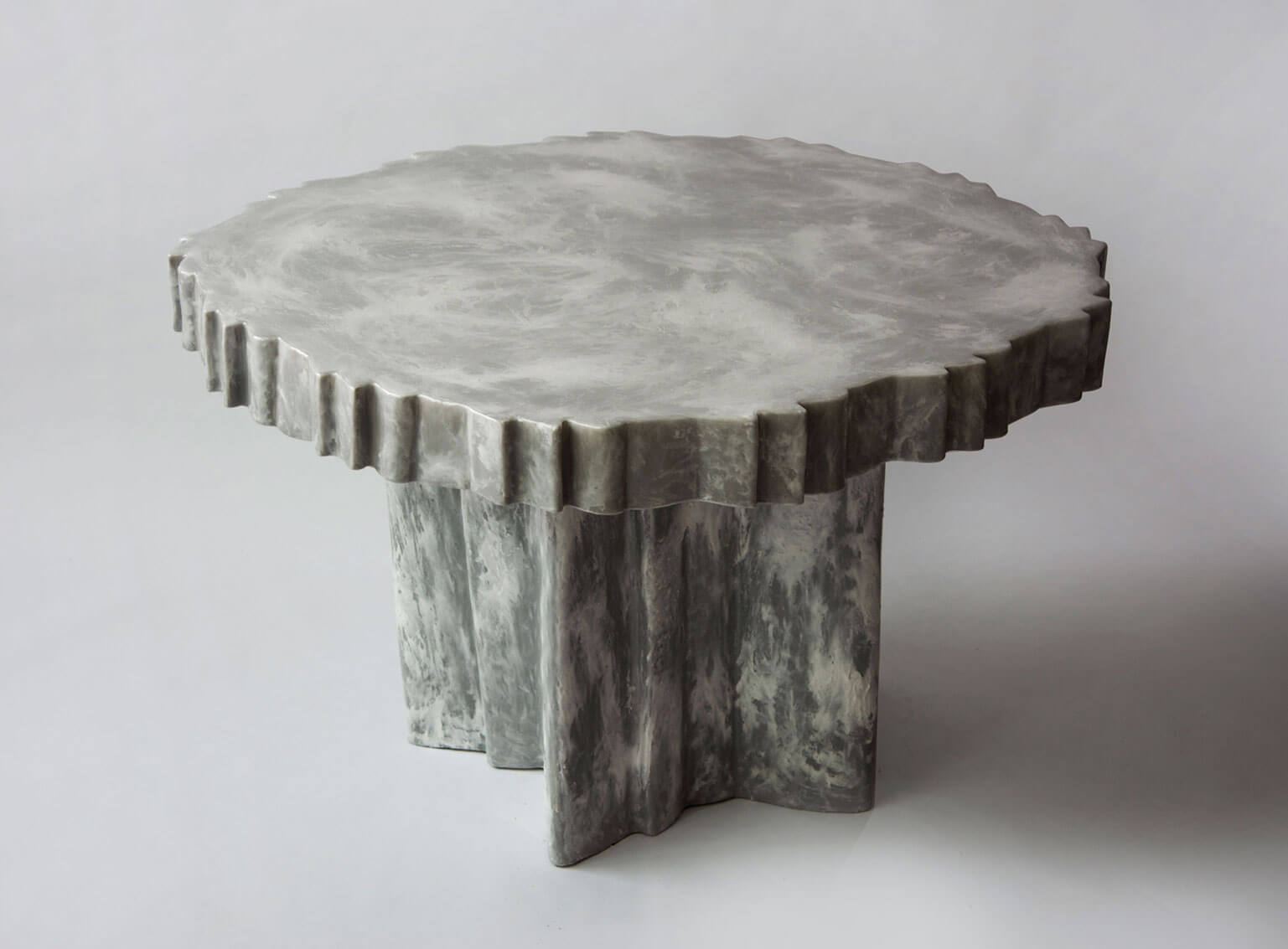
Floris Wubben, ‘Wave Table’, 2020
COURTESY: The Future Perfect
“One machine I use often took five years to perfect,” the designer admits. “But what makes each object unique is the custom profile, or group of profiles, I insert into these machines. It’s the element that defines everything: the process of making but also the end result. Even if I’m able to make decisions, it’s the machine that determines the final outcome. I’m not in total control. The clay takes on a life of its own.”
A survey of Wubben’s recent output is currently on view at New York’s Casa Perfect, one of bicoastal gallery The Future Perfect’s two residence-based outposts. Just in from Floris Wubben debuts new works that expand on the designer’s ongoing exploration of extrusion and represents the next stage in his cumulative oeuvre. Developed in partnership with the Netherland’s European Ceramic Work Centre (EKWC), these large stoneware tables, luminaires, vessels and mirrors incorporate new components like glass, lighting and wood.
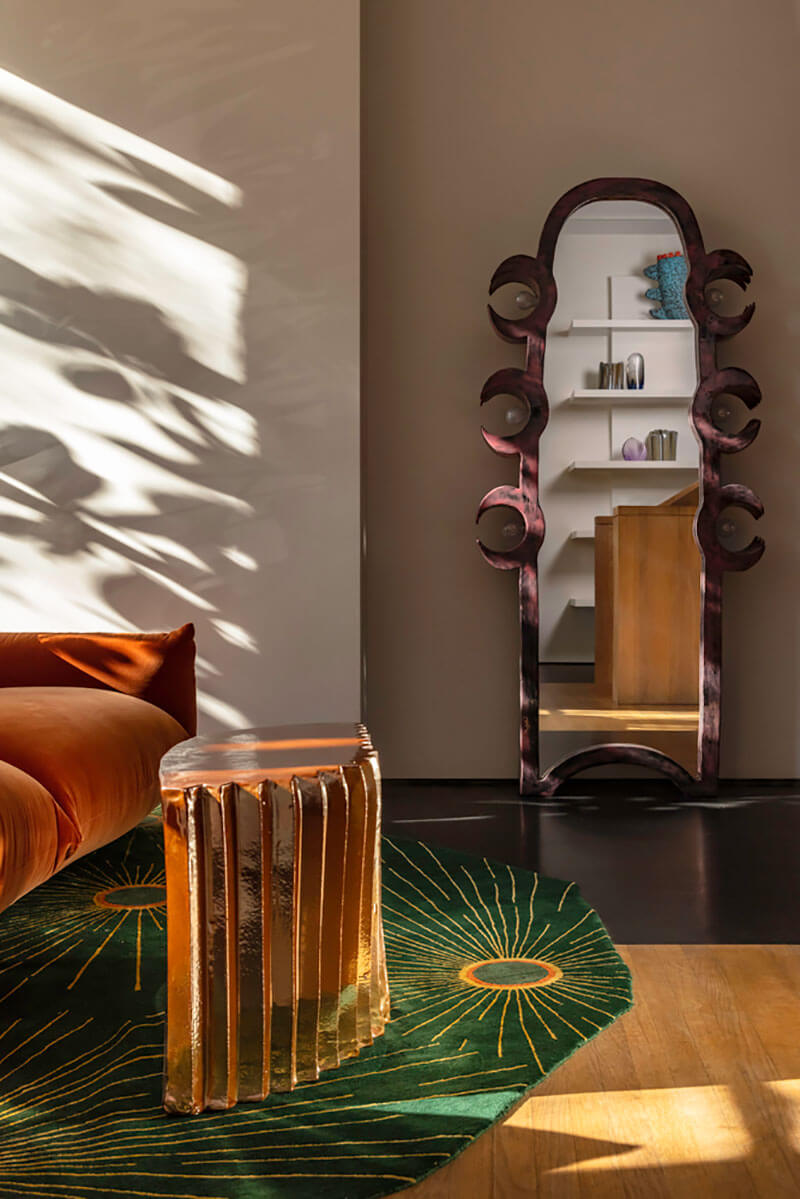
Installation view with ‘XXL’ stool, 2020 and ‘Standing Mirror’, 2020
COURTESY: The Future Perfect/ PHOTOGRAPH: Ori Harpaz
“An intuitive designer, like me, just starts building stuff because they have a deep need to do so …”
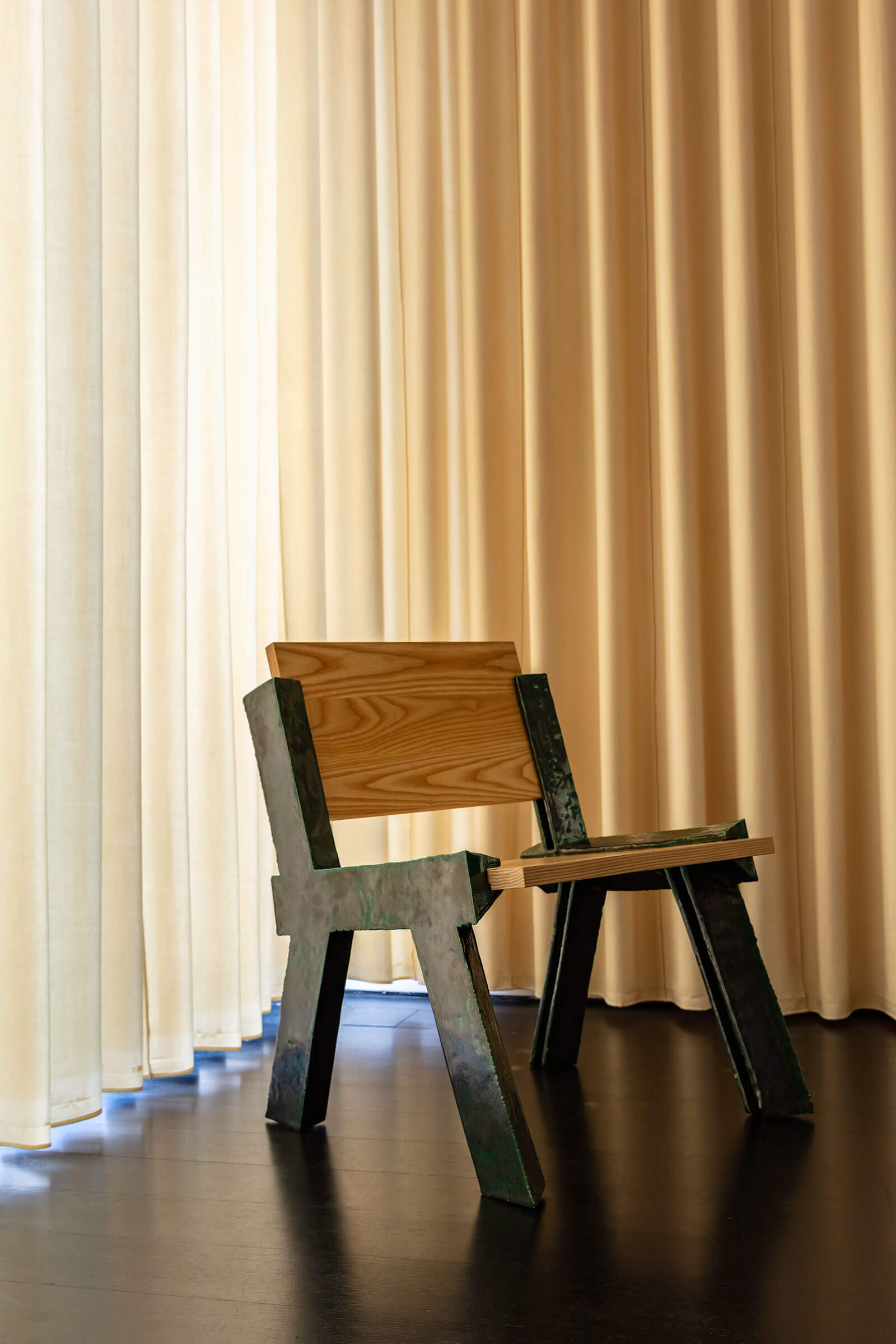
Installation view with ‘Twelve Forty – Deep Green + Ash’, 2020
COURTESY: The Future Perfect / PHOTOGRAPH: Ori Harpaz
“… Through their process, they let the material guide them, and an object emerges”
Wubben’s trademark deep geometric relief patterns, first evident in his career-defining Pressed Debut Vase Collection, carry through in the new ‘Tulip Lamp’. “One design always comes out of another,” he reflects. “You develop something and see possibilities with that when you start creating an object. Then, when you design something entirely new, you can apply that same knowledge.”

Floris Wubben, ‘Tulip Floor Lamp’, 2020
COURTESY: The Future Perfect
Inspired by the 16th century linen collars Dutch men and women wore to express status, the massive 800-kilo ‘Collar Table’ refines and scales up his signature relief technique – while also demonstrating the capability of his machines. Rather than being shaped through one fluid motion, this piece, along with the other new works, was constructed by cutting, stacking, merging, and piecing together various extruded shapes.
Perhaps the most unexpected piece on view is the ‘Twelve Forty Chair’, which Wubben named after the temperature its ceramic armature profiles were fired at for it to withstand human weight. “It’s insane and challenging to make,” he explains. “My aim with this design is to change people’s perception and show them how strong clay can be. I added wood to one version so that people could feel more comfortable with the idea of sitting on a ceramic chair.”

Floris Wubben, ‘Twelve Forty – Lava Red’ chair, 2020
COURTESY: The Future Perfect
Though these new works are both larger and yet more intricate than their predecessors, they still reflect Wubben’s soft, lyrical aesthetic. The designer has no interest in forcing clay to be something it isn’t. Rather, this recent output reveals the potential of clay and suggests how far it can be taken while still maintaining its essence and true materiality.
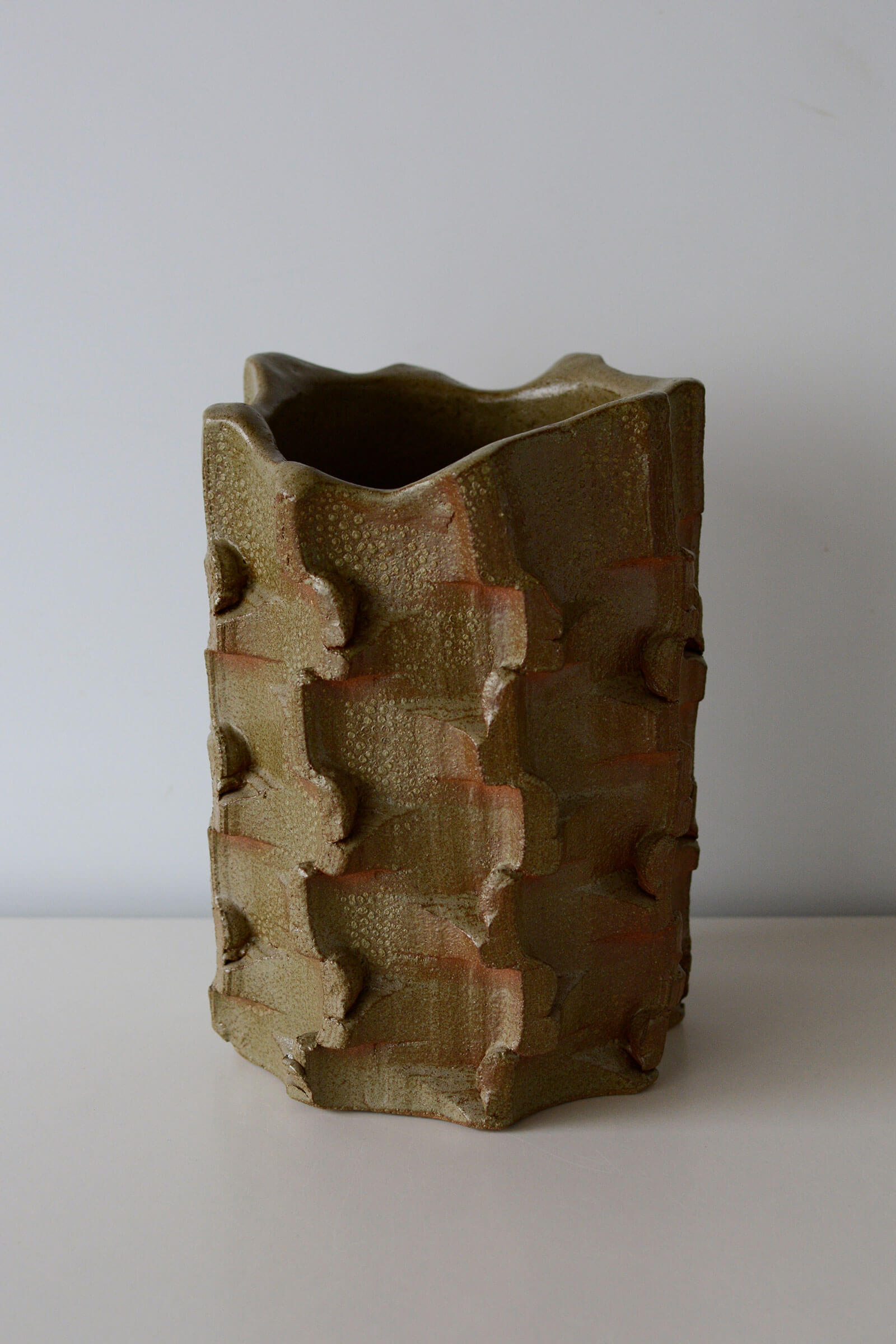
Floris Wubben, ‘Bolt’ vase, 2020
COURTESY: The Future Perfect
“You have conceptual designers and intuitive designers,” he explains. “A conceptual designer searches for a problem or a theme to start off with. An intuitive designer, like me, just starts building stuff because they have a deep need to do so. Through their process, they let the material guide them, and an object emerges. Sometimes, you make horrible objects, and other times, beautiful objects. It’s hard to know how this happens, but if you look back, you can see that things happen for a reason.”
Though expressive in form, historical in reference and fatalistic in process, Wubben’s creations follow the fundamental tenet of honest design. The manner in which they’re produced remains evident in their final state. “Everything is extruded,” the designer concludes. “Even the small claw-like elements on the ‘Standing Mirror’, which serve the purpose of anchoring light bulbs.”
Floris Wubben at Casa Perfect, New York.
Studio Floris Wubben – Amsterdam-based artist working at the cutting edge of functional objects and sculptural design.
